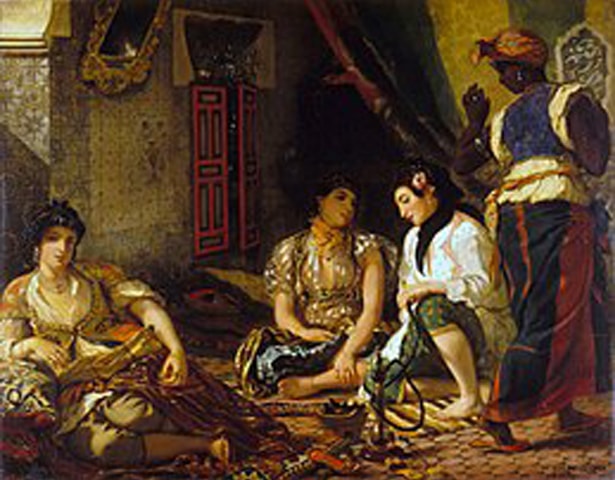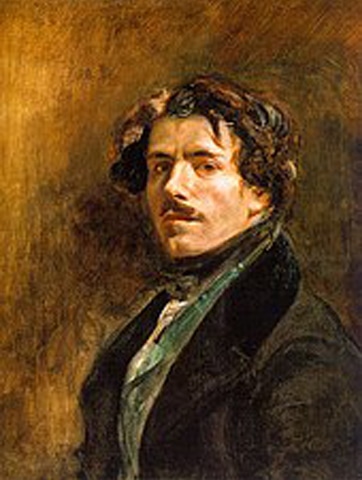
Witnessing a Eugène Delacroix exhibition is like watching Hollywood movies made in the 1950s, such as Ben Hur (1959), Solomon & Sheba (1959), Samson & Delilah (1949) and The Ten Commandments (1956): the canvases are gigantic and full of action with soldiers on horses or ocean scenes with heavily armed battleships. Then there is the spectacle of survivors from a shipwreck desperately striving to reach the shore.
Born in an upper-class Parisian suburb in 1798, Delacroix wasn’t expected to be a painter in the first place. His father was the French foreign minister and one of his elder brothers rose to the rank of a general in Napoleon’s army. Another brother, also a military officer, was killed in a battle.
Given such a family background and his successful education as a brilliant student in history, political science and literature; everything led to the belief that the young Eugène would naturally be attracted to a career in the army or in civil service.
But, following the unexpected death of his parents, he decided to neither be a bureaucrat nor a soldier. In total desperation, at the age of 17, Delacroix turned all his talents and imagination to art.
French artist Eugène Delacroix is often regarded as the initiator of the symbolist movement, but himself was averse to bracketing art or artists
“I had a choice between the pen and the sword,” he wrote to a close friend in 1815, “…but I have decided to take up the painter’s brush. May God help me!”
His progress was astonishing. In 1822, at 24 years of age, his large oil painting ‘The Barque of Dante’ was displayed at Salon de Paris, the most coveted exhibition of the time. Controversy was immediate as Delacroix’s style directly violated the rules of Impressionism — the reigning movement of the time that concentrated on peaceful natural scenes of forests, valleys and seashores.
Then came another shock to conservative values as ‘The Barque of Dante’ was bought by Luxembourg Gallery, a prestigious and permanent art collection in Paris.
Only two years would pass when Delacroix would be at the centre of polemics once again with another huge (4.19 x 3.54 metres) canvas, ‘The Chios Massacre’ (1824); showing the survivors of carnage by Turkish soldiers on a Greek island.
Delacroix was too busy painting all his life to have time for a family life. His interest in women remained limited to his models who were also the inspirations for his masterpieces such as ‘Women of Algiers’ and ‘Liberty Leading the People’.
As he progressed with zeal, Delacroix’s passion for recreating long-lost historical, mythological and literary legends using expressive brushstrokes would earn him the reputation of the initiator of the symbolist movement. But he remained opposed to the idea of any kind of obsession for a painter. In his own words, “The artist who aims at perfection in everything finally ends up achieving nothing.”

Describing his inspiration, the famous French poet and art critic Charles Baudelaire said: “Delacroix was passionately in love with passion itself. A strict discipline not the result of his emotions but rather coldly calculated in order to express his visions on the canvas as clearly as possible.”
Delacroix visited England in 1825 at the age of 27. Impressions of his British tour remained with him for a long time. Many of his paintings from the tour were inspired by the works of William Shakespeare and Lord Byron, such as ‘Hamlet and Horatio in the Graveyard’ and ‘The Death of Sardanapalus’.
The artist kept travelling until he breathed his last. He visited Spain and North Africa as member of a diplomatic mission, shortly following the occupation of Algeria and Morocco by France. But his participation in the group was only a ruse to conceal his real passion for studying the local cultures in order to create what would later result in about a 100 paintings and drawings depicting the lifestyle and customs of the Arab people inhabiting the northern part of the African continent.
His triumphs continued unceasingly until the early 1860s when he suddenly started feeling too tired to go on working. Shortly before his death in Paris on August 13, 1863, Delacroix, in his will, forbade anyone to recreate his features… “whether on a death-mask or by drawing or in a photograph.”
The exhibition “Delacroix (1798-1863)” is being exhibited at Louvre Museum in Paris from March 29 to July 23, 2018
The writer is an art critic based in Paris ZafMasud@gmail.com
Published in Dawn, EOS, June 10th, 2018













































Dear visitor, the comments section is undergoing an overhaul and will return soon.